











Grandeurs of a Everlasting era in Hyderabad – A must from the eyes of a tourist
Grandeurs of a bygone era in Hyderabad offers a fascinating glimpse into the city’s rich and diverse heritage. Hyderabad, once the seat of the Nizams, boasts a regal legacy that is still palpable in its historic sites and monuments. Here are some highlights of the city’s past splendor:
1. Charminar
A symbol of Hyderabad, the Charminar stands as a grand testament to the city’s Mughal-era architecture. Built in 1591 by Sultan Muhammad Quli Qutb Shah, this iconic monument features four grand arches and is intricately adorned with floral motifs. The Charminar is not only an architectural marvel but also a bustling hub for local markets and street food.
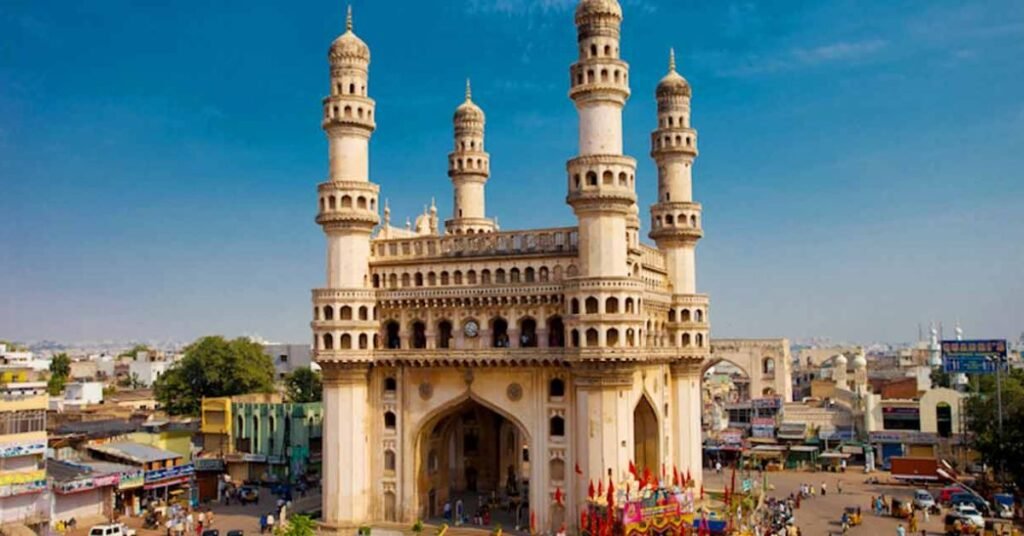
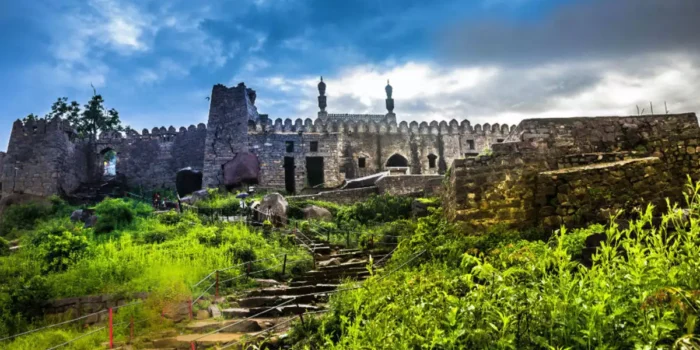
2. Golconda Fort
The imposing Golconda Fort, originally a mud fort constructed in the 13th century, was later expanded with stone by the Qutb Shahi dynasty. Its massive walls, intricate gate designs, and expansive ramparts showcase the military and architectural prowess of the period. The fort is renowned for its acoustics and offers spectacular views of the surrounding landscape.
3. Hussain Sagar Lake
Constructed during the reign of Ibrahim Quli Qutb Shah in 1562, Hussain Sagar Lake was designed to provide water to the city. The lake’s centerpiece, the imposing Buddha statue on an island, adds to its historical and cultural significance. The lake is not only a serene spot for boating but also an emblem of the city’s development during the Qutb Shahi era

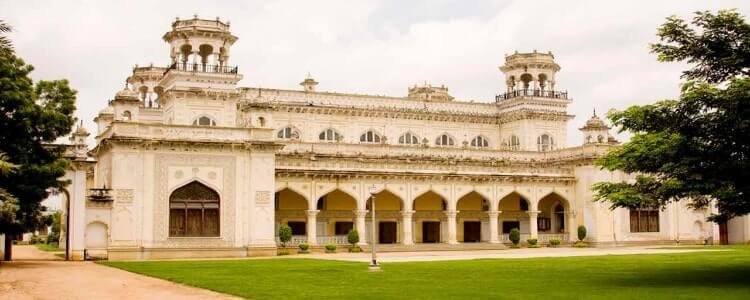
4. Chowmahalla Palace
Once the seat of the Nizam’s government, Chowmahalla Palace is a sprawling complex with exquisite courtyards and beautifully adorned rooms. Its Nizam-era splendor is reflected in the grand Durbar Hall, stunning chandeliers, and lush gardens. The palace showcases the elegance and luxury of Hyderabad’s royal court.
5. Taramati Baradari
Taramati Baradari is an ancient pavilion built during the Qutb Shahi period. Known for its acoustic design and stunning architecture, it was used as a performance hall for music and dance. The pavilion, set amidst lush gardens, offers a glimpse into the cultural life of Hyderabad’s past.

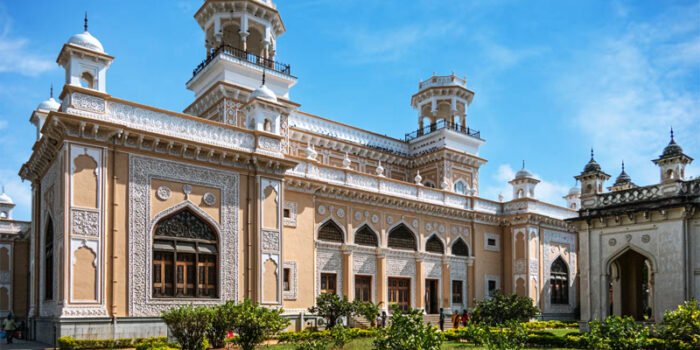
6. Purani Haveli
Purani Haveli, once a residence of the Nizam, is known for its historical charm and the impressive clock tower. The haveli’s architecture and the artifacts inside provide insight into the lifestyle of the Nizam’s era, making it a fascinating stop for history enthusiasts.
Nawab Vicar-ul-Umra – eye for “Grandeur and Uniqueness”

Nawab Vicar-ul-Umra, born Mir Fath Ali Baig in the early 19th century, was a prominent figure in the Hyderabad state, serving as the Prime Minister under the Nizam’s reign. His rise to prominence is marked by a distinctive blend of visionary leadership and an unrivaled appreciation for grandeur and unique artistry.
Vicar-ul-Umra’s career began in the administrative corridors of Hyderabad, where his acumen and strategic foresight quickly elevated him through the ranks. Appointed as the Prime Minister in 1869, he was instrumental in shaping the governance and infrastructural development of Hyderabad. His tenure was characterized by efforts to modernize the state, reflecting his belief in blending traditional grandeur with contemporary advancements.
Nawab Vicar-ul-Umra’s most significant contribution to Hyderabad’s architectural legacy is the construction of the Falaknuma Palace. Conceived as a symbol of opulence, the palace was built between 1884 and 1893. Designed by the architect Charles Mundy, the palace is renowned for its breathtaking blend of Italian and Tudor styles, a reflection of Vicar-ul-Umra’s desire to create something truly unique and splendid.
The Falaknuma Palace is a masterpiece of architectural grandeur, featuring ornate interiors, expansive marble floors, and elaborate chandeliers. Its most notable feature is the grand dining hall, designed to seat 101 guests—a testament to Vicar-ul-Umra’s penchant for extravagance and his vision of hosting elaborate feasts and gatherings that showcased the magnificence of Hyderabad’s court.
Vicar-ul-Umra’s passion for creating unique experiences extended beyond architecture. He was known for his distinct taste in art and design, evident in the palace’s richly decorated rooms, intricate woodwork, and the luxurious ambiance that characterizes the estate. His interest in blending various styles and incorporating elements from different cultures was driven by a desire to set Hyderabad apart from other princely states in India.
His leadership was marked by a commitment to innovation while preserving the rich cultural heritage of Hyderabad. This dual focus ensured that while the city advanced in modernity, it never lost sight of its historical and artistic roots.
Nawab Vicar-ul-Umra’s legacy is not only confined to the architectural splendor of Falaknuma Palace but also in the way he influenced Hyderabad’s cultural landscape. His approach to blending grandeur with unique elements left an indelible mark on the city, making it a prominent symbol of royal sophistication and innovation.
His contributions to Hyderabad extend beyond physical structures; they reflect a period when the state embraced both tradition and modernity with equal fervor. Vicar-ul-Umra’s legacy continues to be celebrated as a paragon of royal elegance and an embodiment of a vision that sought to merge the splendor of the past with the uniqueness of the present.
Nawab Vicar-ul-Umra remains a fascinating figure in Hyderabad’s history, celebrated for his exceptional taste and his ability to create a unique blend of grandeur and innovation. His legacy, encapsulated in the magnificent Falaknuma Palace and his contributions to the city’s cultural and administrative fabric, stands as a testament to his unparalleled vision and enduring influence.
Reason to visit Falaknuma Palace – A touristic viewpoint

As a tourist visiting Hyderabad, one of the most enchanting experiences is a trip to the Falaknuma Palace. Nestled atop a hill, this opulent palace stands as a magnificent testament to the grandeur of a bygone era. Constructed in the late 19th century, it was originally built by the Nawab Vicar-ul-Umra, the then Prime Minister of Hyderabad, and later became the residence of the Nizam of Hyderabad.
From the moment you approach the palace, its sheer elegance is undeniable. The architecture is a stunning blend of Italian and Tudor styles, adorned with ornate details that speak of its royal past. The palace is famed for its sweeping staircase, intricate marble floors, and lavishly decorated rooms that reflect the splendor of the Nizam’s court.
A tour of Falaknuma Palace feels like stepping back in time. The opulent interiors are filled with antique furniture, crystal chandeliers, and grandiose mirrors. One of the highlights is the grand dining hall, which boasts the world’s largest dining table, capable of seating up to 101 guests. Each room tells a story of luxury and historical significance, with beautifully preserved artifacts and artworks that provide a glimpse into the regal lifestyle of Hyderabad’s rulers.
The panoramic views from the palace are breathtaking. From its elevated position, you get a sweeping vista of the city below, which is especially captivating during sunset. The palace grounds are meticulously maintained, with lush gardens and serene courtyards that offer a tranquil escape from the bustling city life.
Today, the Falaknuma Palace operates as a luxury hotel under the Taj group, providing guests with an opportunity to experience royal hospitality firsthand. Even if you’re not staying there, you can often enjoy a guided tour, savor a meal at one of the palace’s exquisite dining venues, or partake in a traditional high tea.
Visiting Falaknuma Palace is more than just a sightseeing trip; it’s an immersive journey into the heart of Hyderabad’s royal heritage, leaving you with a deep appreciation for the city’s rich history and architectural marvels
Important dates in the life of the Palace
Timeline of Falaknuma Palace
1884
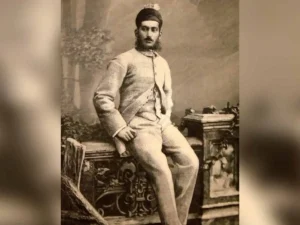
Commissioning: The construction of Falaknuma Palace begins. It was commissioned by Mir Mahbub Ali Pasha, the 6th Nizam of Hyderabad. The design was entrusted to architect Henry Vaughan Lanchester, who was known for his work in Indo-Saracenic architecture.
1894
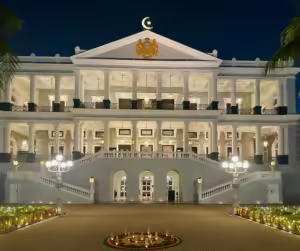
Completion: The construction of the palace is completed after a decade of work. The palace is fully furnished and becomes the residence of the Nizam
1900s
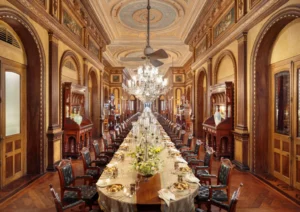
Usage: During the early 20th century, the palace serves as a grand residence and a venue for hosting prominent guests and dignitaries. It reflects the opulence and status of the Nizam of Hyderabad.
1948

Hyderabad’s Integration into India: Following the integration of Hyderabad into the Indian Union, the palace comes under the administration of the Indian government. The Nizam’s reign ends, and the princely state ceases to exist as an independent entity.
1950
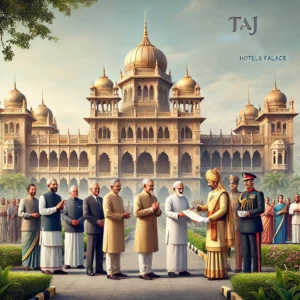
Handing Over to Taj Group: The Indian government hands over the palace to the Taj Hotels group. It is converted into a luxury heritage hotel, known as the Taj Falaknuma Palace, and begins operations as a high-end hotel.
2000s
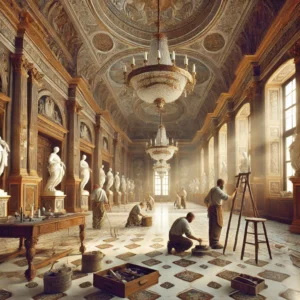
Restoration: The Taj Hotels group undertakes extensive restoration work to preserve the palace’s historical and architectural integrity. The renovation includes restoring original features, such as ornate chandeliers, marble flooring, and intricate woodwork
2010

Reopening: After significant restoration efforts, the Taj Falaknuma Palace reopens to the public as a luxury hotel. It receives acclaim for its preservation of heritage and continues to offer a blend of royal grandeur and modern amenities.
2014

Heritage Recognition: The palace is recognized as a significant heritage property and continues to attract visitors from around the world, offering a glimpse into the grandeur of Hyderabad’s royal past.
Summary
Falaknuma Palace, with its grand architecture and historical significance, has transitioned from being a royal residence to a luxury hotel while preserving its rich heritage. The timeline reflects its evolution from a symbol of royal opulence to a celebrated heritage destination.
Is there a Gift angle in the ownership of the Palace?
The Falaknuma Palace was not actually gifted to the Nizam of Hyderabad by the Prime Minister, but rather it was built and owned by the Nizam himself. Here’s a clearer understanding of its history and context:
- Construction and Ownership:
- Commissioned by: Falaknuma Palace was commissioned by Mir Mahbub Ali Pasha, the 6th Nizam of Hyderabad, in 1884. The Nizam intended it as a residence for himself and his family.
- Architect: The palace was designed by the architect Henry Vaughan Lanchester, who was known for his work in Indo-Saracenic architecture.
- Purpose and Use:
- Primary Use: The palace was built as a royal residence and a venue for hosting dignitaries and large social events. Its opulent design and grand scale reflect the status and wealth of the Nizam.
- Historical Significance: The palace has historical significance as it exemplifies the grandeur of the Nizam’s era and showcases the architectural fusion of Eastern and Western styles.
- Gift to the Nizam:
- Misunderstanding: There might be some confusion or misinformation about a “gift” from a Prime Minister. There are no historical records or reliable sources indicating that Falaknuma Palace was gifted to the Nizam by any Prime Minister.
- Ownership: The palace remained the property of the Nizam of Hyderabad until the princely state’s integration into India in 1948. Post-1948, the palace was used for various purposes, including as a government guest house and, more recently, as a luxury hotel.
- Post-Independence:
- Post-1948: After the integration of Hyderabad into India, Falaknuma Palace came under the control of the Indian government. In 1950, it was handed over to the Taj Hotels group and has since been operated as the Taj Falaknuma Palace, a luxury heritage hotel.
- Historical Events: The transfer or gifting of the palace to the Nizam by a Prime Minister is not a documented historical event. Instead, the palace was originally built for the Nizam and later managed by different authorities following the political changes in India.
- Misconceptions: It’s important to clarify historical facts to avoid misconceptions. The palace’s ownership and usage evolved with the political changes in India, rather than through a specific gift by a Prime Minister.
In summary, the Falaknuma Palace was constructed for and owned by the Nizam of Hyderabad. There is no historical evidence to suggest that it was gifted to him by a Prime Minister. Instead, its transition in ownership occurred due to political changes following India’s independence.









The palace in numbers
From a monetary and financial perspective, Falaknuma Palace has seen significant value and transformation over the years. Here’s an overview of its monetary aspects:
- Initial Investment: The construction of Falaknuma Palace in the late 19th century was a substantial financial undertaking, estimated to have cost around ₹40 lakh (approximately $2 million at that time). The expense reflects the opulence of the design, the quality of materials, and the labor involved.
- Early Costs: During its time as a royal residence, the palace would have incurred significant operational and maintenance costs, including staff salaries, upkeep of the grounds, and maintenance of luxury features like chandeliers and marble.
- Post-Independence: After Hyderabad’s integration into India, the cost of maintaining such a large and elaborate structure continued to be substantial. The Indian government faced the challenge of preserving the palace while repurposing it for other uses.
- 1950s: When the palace was converted into a luxury hotel by the Taj Hotels group, the conversion involved a major investment. The costs included refurbishing the palace to meet the standards of a luxury hotel while preserving its historical character.
- Restoration Costs: In the early 2000s, extensive restoration work was undertaken to preserve the palace’s heritage features. This restoration, which included repairing intricate carvings, restoring chandeliers, and upgrading facilities, was a significant financial investment.
- Luxury Hotel Revenue: As a luxury heritage hotel, Falaknuma Palace generates substantial revenue from high-end tourism. Room rates for the palace can be quite high, reflecting its exclusive status and historic value. Prices for staying at the palace often exceed ₹60,000 per night (approximately $800-$1,000), depending on the season and suite type.
- Events and Functions: The palace also hosts high-profile events, such as weddings and corporate functions, which contribute to its revenue. The grandeur of the venue makes it a desirable location for prestigious events, further enhancing its financial value.
- Tourism Revenue: The palace’s status as a heritage site attracts both domestic and international tourists, contributing to local and national tourism revenue. It supports local employment and businesses associated with tourism, such as tour operators and service providers.
- Property Value: The historical and architectural significance of Falaknuma Palace enhances its property value. Its status as a luxury heritage hotel adds to its attractiveness and financial worth in the real estate market.
- Brand Equity: The association with the Taj Hotels group adds significant brand value. The palace’s reputation as a symbol of royal luxury and historical significance enhances its appeal and helps command premium pricing.
- Cultural Significance: The palace’s cultural and historical importance adds intangible value that influences its monetary worth. Its preservation and ongoing use as a luxury destination contribute to maintaining its high profile and financial success.
Summary
Falaknuma Palace’s monetary aspects reflect its evolution from a lavish royal residence to a valuable heritage hotel. The financial investments in its construction, maintenance, conversion, and restoration have been substantial, but the revenue generated from its luxury hotel operations and cultural significance highlights its significant economic value. The palace’s ability to attract high-profile guests and events further underscores its financial importance in the tourism and hospitality sectors.
Architecture adopted to meet a residential need
Falaknuma Palace, designed primarily as a residence for the Nizam of Hyderabad, exemplifies architectural principles that enhance both luxury and functionality for its occupants. Here’s how its design makes it convenient and comfortable for residential use:
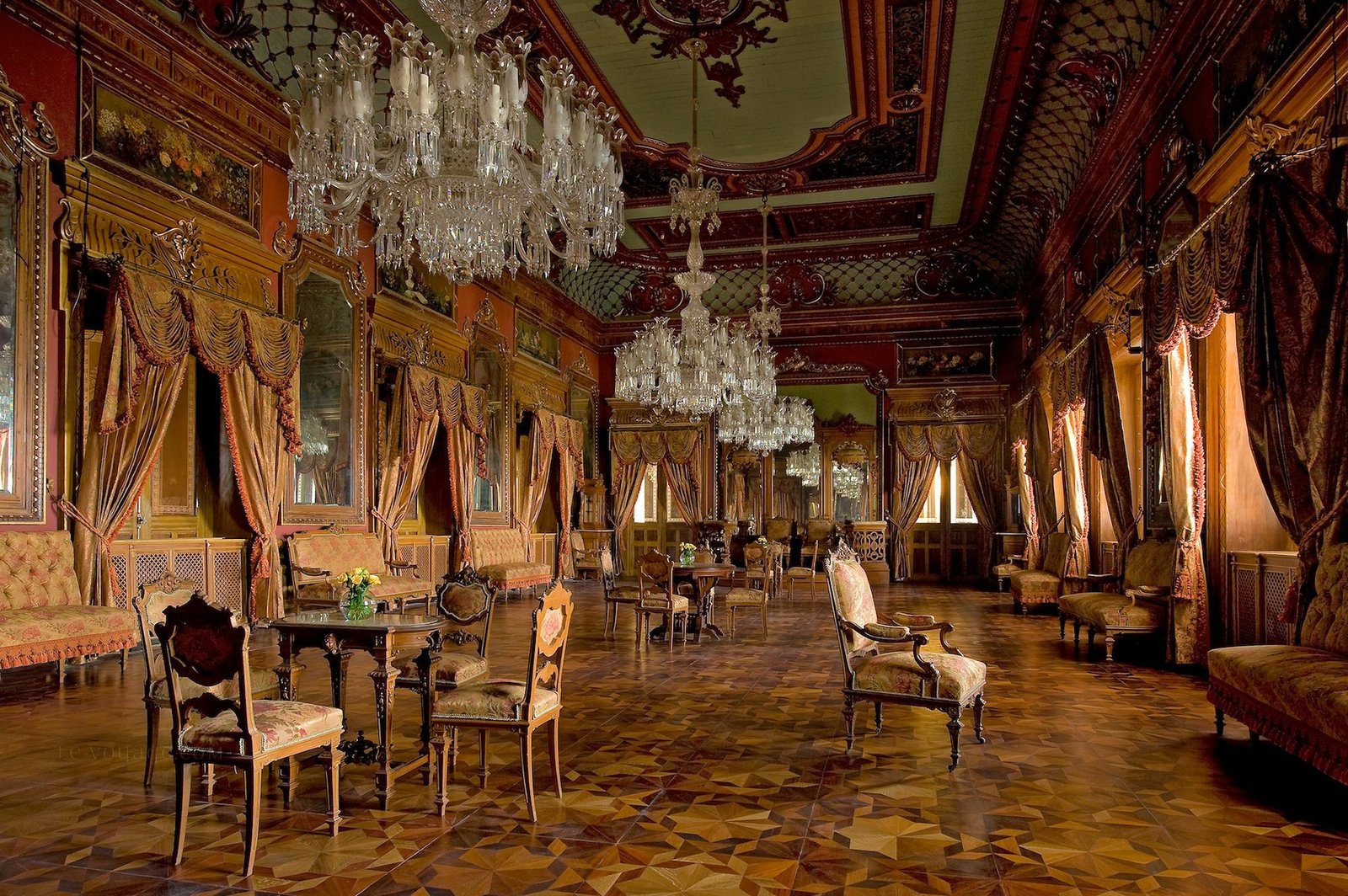
Grand Public Areas: The palace features extensive public areas, including a grand ballroom, dining halls, and reception rooms, allowing for both formal and informal gatherings. These spaces are designed to accommodate large events and serve as social hubs.
Private Quarters: The palace also includes numerous private suites and living quarters for the Nizam and his family, ensuring privacy and comfort. The layout separates public and private spaces effectively
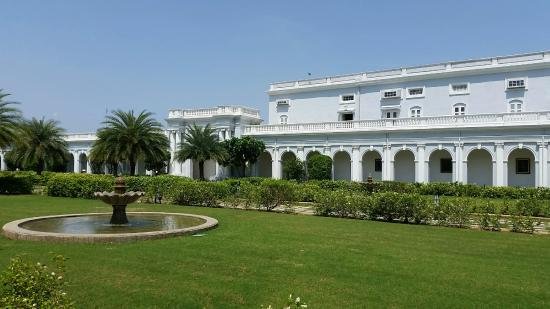
Natural Light and Ventilation: The central courtyard allows natural light to penetrate the interior spaces and enhances cross-ventilation, which is crucial in the warm climate of Hyderabad. This design feature improves indoor air quality and comfort.
Aesthetic Appeal: The courtyard also adds to the palace’s aesthetic appeal, creating a serene and open environment in the center of the residence.
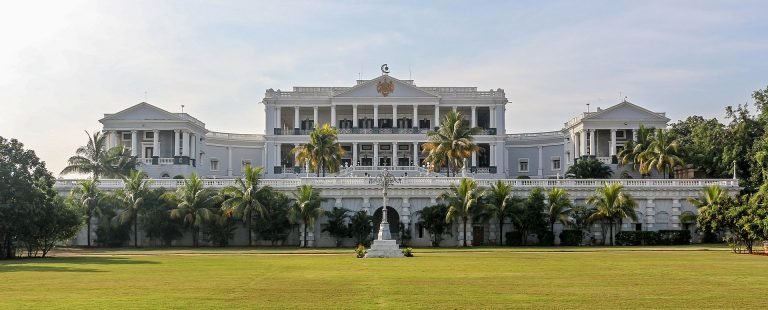
Orderly Arrangement: The symmetrical arrangement of rooms and corridors aids in efficient circulation throughout the palace. This symmetry not only enhances the visual harmony but also ensures ease of movement between different sections.
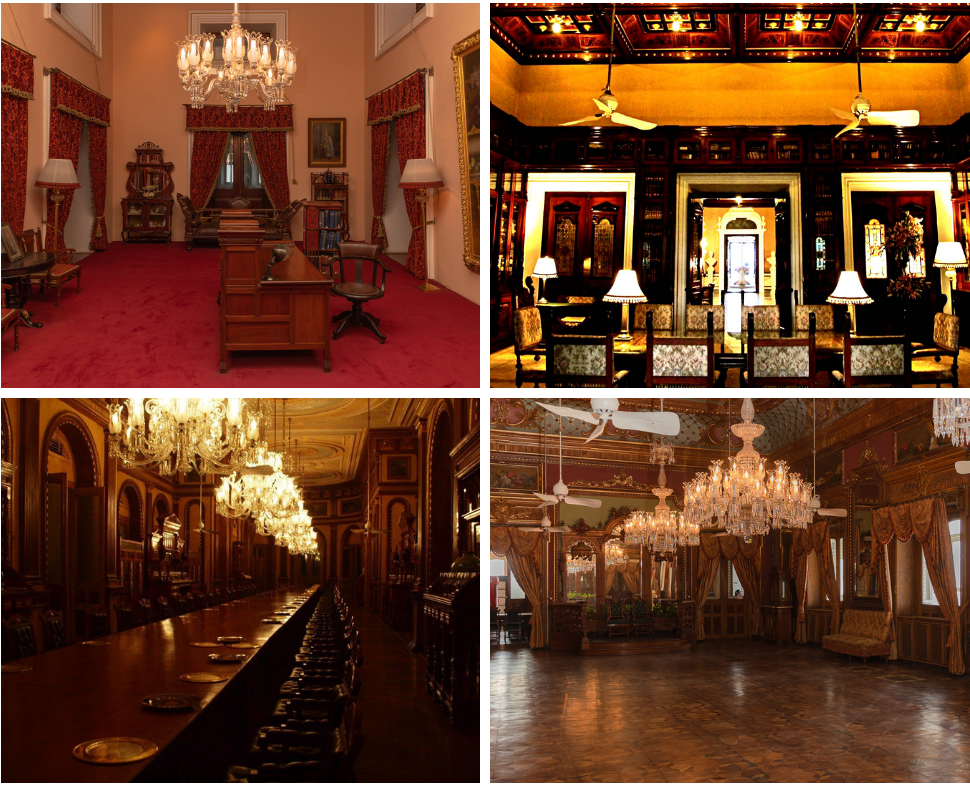
High-Quality Materials: The use of luxurious materials like Italian marble, teak wood, and intricate carvings contributes to both the aesthetic appeal and the comfort of the residence. The high-quality materials also provide durability.
Opulent Interiors: Features such as ornate chandeliers, grand staircases, and lavishly decorated rooms add to the luxury and comfort of the living environment, making the palace a pleasant place to live.
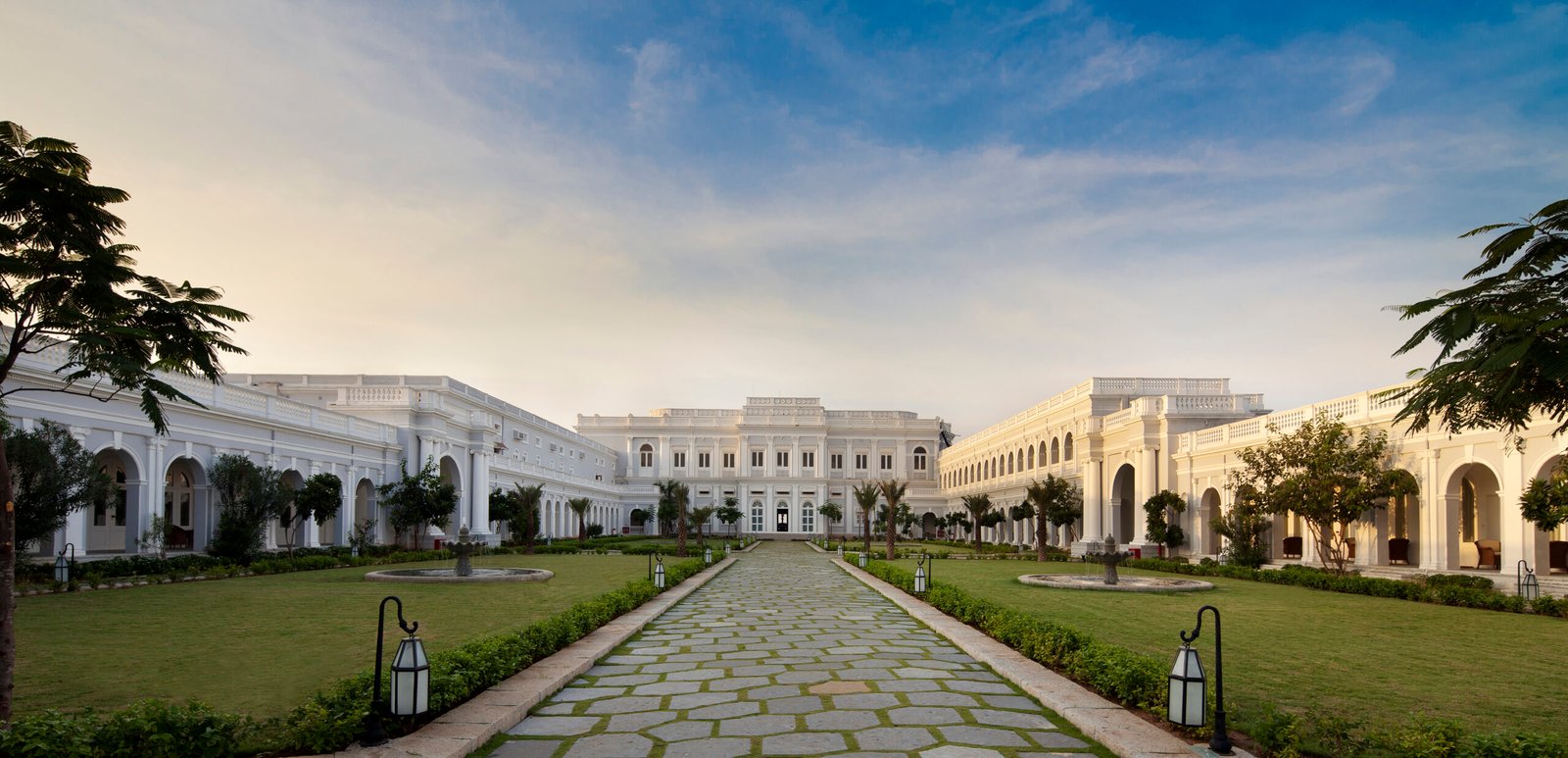
High Ceilings and Arches: The high ceilings and large arches are not only stylistically impressive but also functional in improving air circulation and cooling the interior spaces, adapting to the hot and humid climate.
Ventilation Systems: Advanced (for its time) ventilation systems and strategically placed windows ensure that the palace remains cool and well-ventilated.
 Strategic Layout: The palace’s layout includes secluded private quarters away from the public areas, ensuring privacy and security for the family.
Strategic Layout: The palace’s layout includes secluded private quarters away from the public areas, ensuring privacy and security for the family.
Fortified Design: The overall design incorporates elements that offer both grandeur and security, with secure entry points and discreet access to private areas.
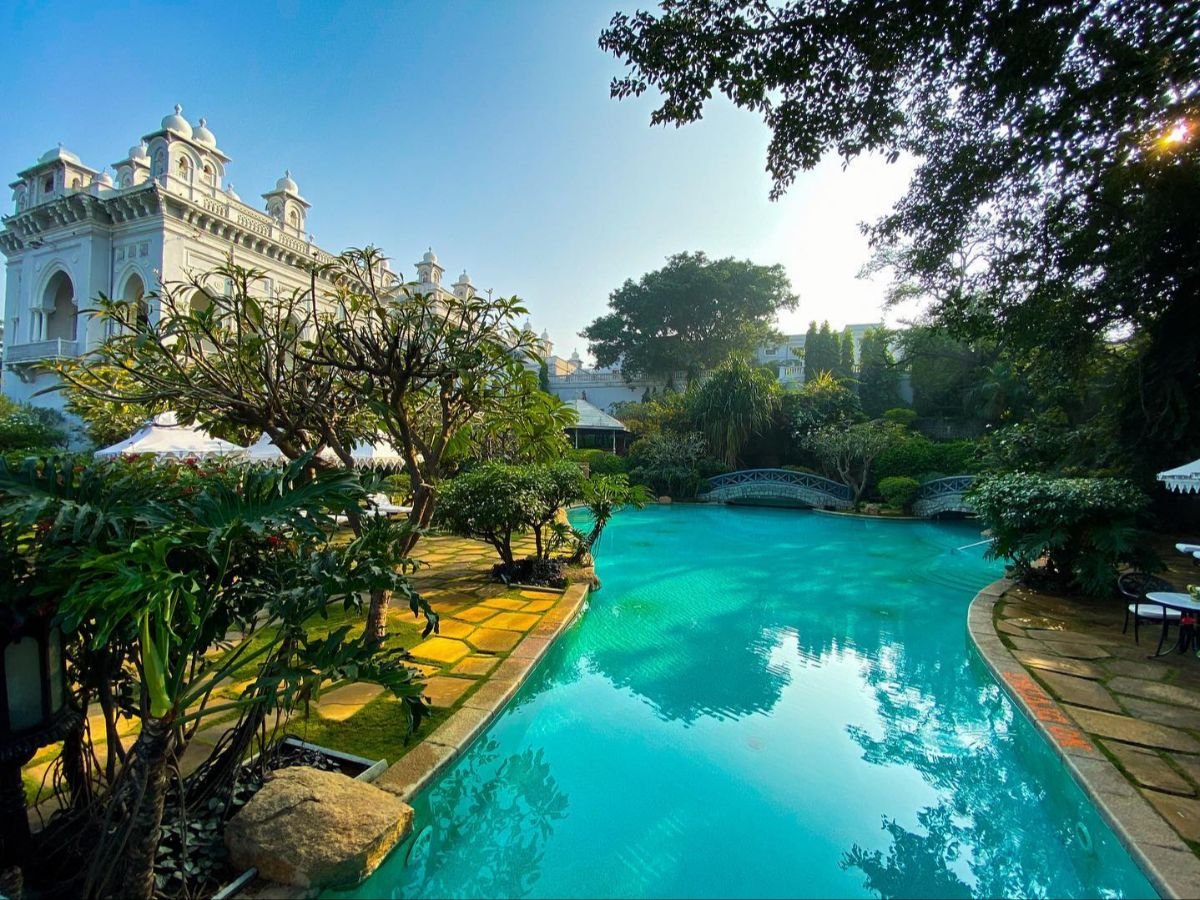
- Gardens and Greenery: The palace is surrounded by lush gardens and well-maintained landscapes, integrating the residence with its natural surroundings and providing tranquil outdoor spaces for relaxation and recreation.

- Balconies and Verandas: These features not only enhance the aesthetic value of the palace but also provide practical outdoor spaces for enjoyment and leisure.
- Decorative and Functional Balance: The palace’s intricate carvings and decorative elements are balanced with practical features such as built-in furniture and storage solutions.
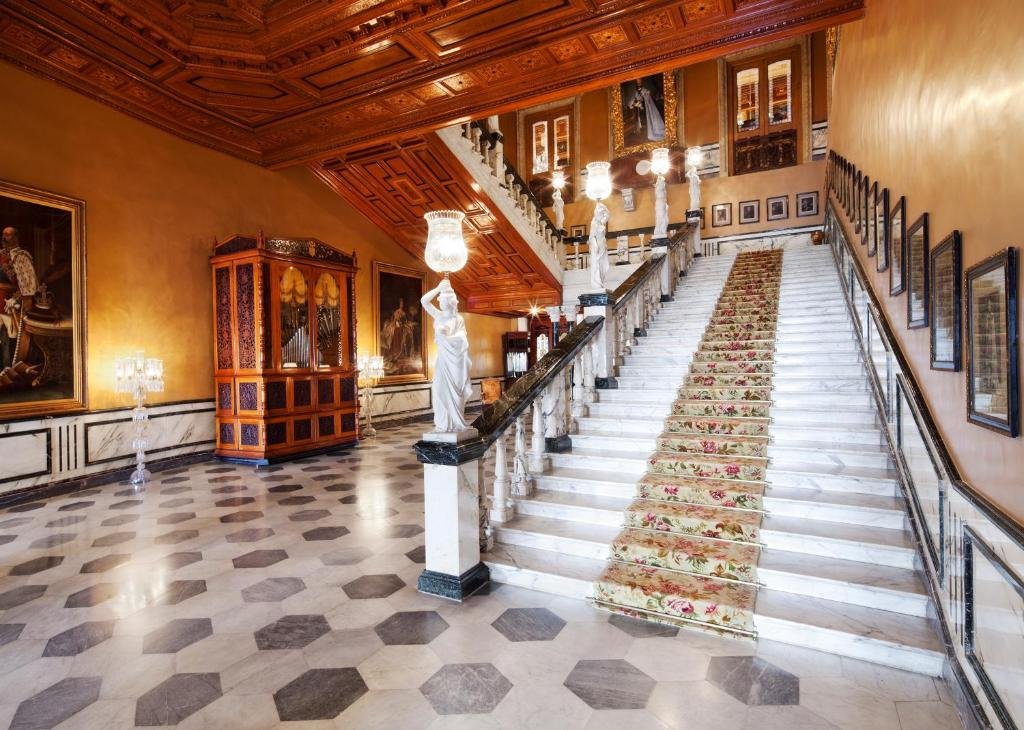
- Advanced Facilities: When constructed, the palace included modern amenities such as a telephone exchange and an early form of air conditioning, reflecting a blend of traditional design with contemporary conveniences.
Overall, Falaknuma Palace’s design effectively combines grandeur and functionality, ensuring that the residence is not only a symbol of opulence but also a comfortable and practical home for its inhabitants.
Comments are closed.
